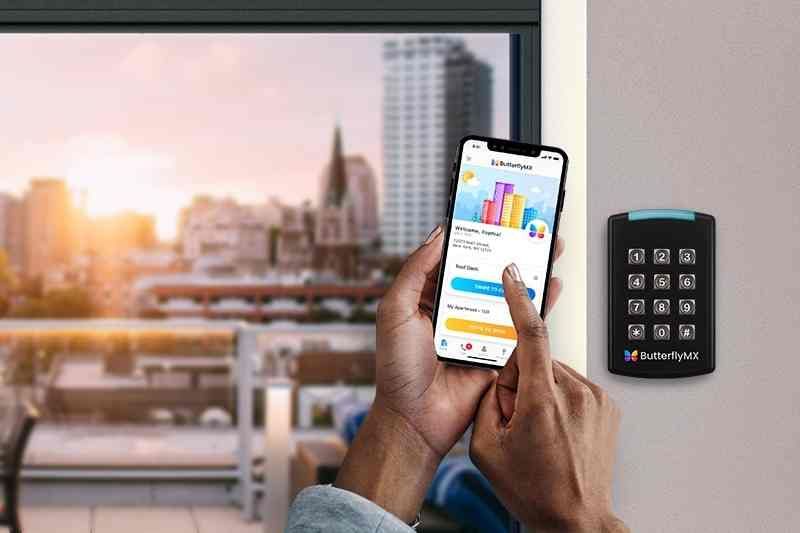In today’s healthcare environments, protecting patients, staff, and sensitive medical data requires more than physical vigilance, but also intelligent access control. Hospitals and medical facilities face constant security challenges, from unauthorized access to medication storage rooms to safeguarding electronic health records.
As such, a key fob door entry system offers a reliable, scalable solution designed to enhance both safety and efficiency in healthcare settings.
Why Access Control Matters in Healthcare
Medical facilities operate around the clock and serve diverse groups — patients, visitors, staff, and contractors — all with different access needs. Traditional lock-and-key systems are no longer enough to manage this complexity. Lost keys, unsecured doors, and unrestricted access can lead to security breaches that put lives and information at risk.
That’s why many hospitals are turning to key fob door entry systems. These systems provide secure, trackable, and customizable access, ensuring that only authorized personnel can enter restricted areas.
What Is a Key Fob Door Entry System?
A key fob door entry system uses RFID (radio frequency identification) technology to control access. Authorized users carry small fobs programmed with digital credentials, which they scan against a reader to unlock a door. Each fob is linked to a specific user profile, allowing administrators to manage permissions, monitor activity, and revoke access instantly if needed.
How Key Fob Systems Improve Security in Medical Environments
1. Controlled Access to Sensitive Areas
Hospitals contain numerous zones that require restricted entry, such as patient wards, pharmacies, operating rooms, and data centers. A key fob system ensures that only authorized medical personnel can access these spaces. Permissions can be customized based on role or department, reducing the risk of unauthorized entry or data exposure.
2. Audit Trails for Compliance
Healthcare organizations must comply with regulations like HIPAA, which emphasize the protection of patient data. Key fob systems automatically log every access event, creating detailed audit trails that support compliance and internal investigations. Administrators can view who entered a room, at what time, and for how long — adding accountability at every level.
3. Integration with Hospital Management Systems
Modern access control platforms can integrate with existing hospital management tools and security infrastructure. When paired with video surveillance, key fob data can be linked to visual verification, offering a comprehensive overview of security events. Some systems also integrate with electronic health record (EHR) platforms to ensure that only credentialed staff can access devices storing sensitive information.
4. Rapid Response and Remote Management
In emergencies, such as lockdowns or patient elopements, administrators can instantly adjust access permissions from a central dashboard. Lost or stolen fobs can be deactivated in seconds, preventing unauthorized entry without the need to replace physical locks.
5. Improved Staff Workflow
Beyond security, key fob systems streamline hospital operations. Staff can move seamlessly between departments without juggling multiple keys or codes. This improves efficiency in time-sensitive environments like emergency rooms and surgical suites, where quick access can make a critical difference.
Implementing Key Fob Systems in Healthcare
When introducing a key fob door entry system into a medical setting, facility managers should consider:
- Zoning and Access Levels: Map out which areas require restricted access and assign permission levels based on job roles.
- System Integration: Choose a platform that integrates with security cameras, alarm systems, and IT infrastructure.
- Compliance Requirements: Ensure the system meets healthcare security standards and supports HIPAA compliance.
- Scalability: Hospitals grow and evolve, so select a system that can scale with new wings, clinics, or departments.
- Training and Adoption: Educate staff on proper fob use, reporting lost credentials, and emergency procedures.
The Future of Hospital Access Control
As healthcare facilities adopt more connected technologies, access control systems are evolving too. Many hospitals are beginning to explore mobile credentials and biometric authentication for added layers of security. However, the key fob door entry system remains a dependable foundation for secure, efficient access — particularly in large, complex environments where reliability and ease of use are crucial.
Final Thoughts
In healthcare, safety and trust are inseparable. A key fob door entry system empowers medical administrators to safeguard what matters most — their patients, staff, and sensitive data. By upgrading to a secure, data-driven access control system, hospitals can create a safer environment that supports both clinical care and operational excellence.
